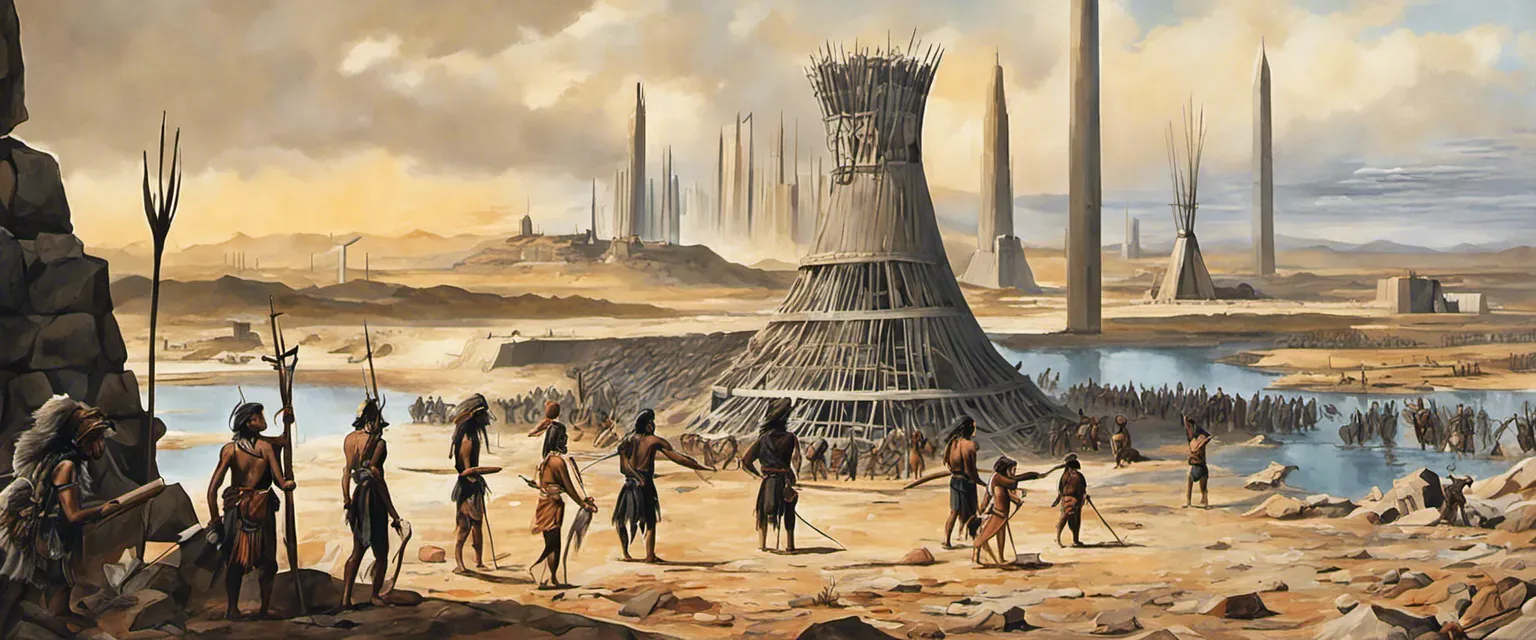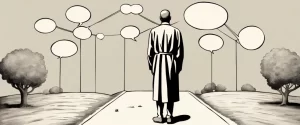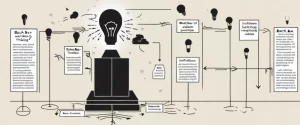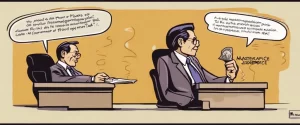——Guns, Germs, and Steel by Jared Diamond & Sapiens by Yuval Noah Harari
The enigmatic nature of human history has long captivated scholars and continues to be a subject of profound fascination for humanity at large. In the realm of historical analysis, two seminal works have emerged as astonishing investigations into the grand tapestry that shapes the course of human civilization: Guns, Germs, and Steel by Jared Diamond and Sapiens by Yuval Noah Harari.
Both Diamond and Harari offer us thought-provoking perspectives on our collective past, shedding light on the complex factors that have defined our societies, institutions, and advancements. Through their meticulous research and analytical prowess, these scholars unravel the intricate interplay between geography, biology, culture, and technology, consequently delivering invaluable insights into the trajectory of our species.
In this comparative study, we seek to examine the significant overlaps and contrasts between Diamond’s Guns, Germs, and Steel and Harari’s Sapiens, exploring how each author approaches the fundamental questions surrounding the rise and dominance of Homo sapiens throughout history. We aim to delve deeper into the motivations, methodologies, and conclusions of both authors, ultimately uncovering the unique perspectives they offer and their implications for understanding our past and contemplating our future.
Diamond’s Guns, Germs, and Steel, published in 1997, presents a deeply rooted thesis that challenges traditional Eurocentric explanations for disparities between civilizations. Diamond postulates that the divergent paths of development among human societies can be primarily attributed to geographic and environmental factors. By intertwining archaeology, anthropology, and history, the author crafts an exhaustive narrative that scrutinizes the impact of guns, germs, and steel on the rise of certain groups while others languished.
On the other hand, Harari’s Sapiens, published in 2011, embarks on a panoramic journey through time, reconstructing the story of Homo sapiens from its inception to the present day. Rather than focusing solely on external factors, Harari delves into the realm of cultural and cognitive evolution that sets mankind apart. Debunking accepted narratives, Harari challenges our understanding of concepts such as progress, civilization, and power, urging readers to reconsider their preconceived notions about human society.
By juxtaposing the contrasting perspectives of Diamond and Harari, we aim to foster a more comprehensive understanding of the variegated factors that have propelled our species forward, and at times, constrained our potential. This comparative study will allow us to explore the strengths and limitations of each work and discern the nuanced insights they offer.
In the following sections, we will delve into the methodologies employed by Diamond and Harari, examining their treatment of crucial historical events, their interpretation of cultural developments, and their examination of the intricate relationships between humans and their environment. By doing so, we hope to unravel the layered narrative that underpins their respective works and illuminate the significance of their contributions to the field of historical scholarship.
As we embark on this exploratory journey through time, we invite readers to join us in unraveling the secrets buried within the pages of Guns, Germs, and Steel and Sapiens, gaining a deeper understanding of the forces that have shaped our collective destiny, and igniting a newfound appreciation for the boundless intricacies of human history.
Brief Summary of Two Books
Guns, Germs, and Steel by Jared Diamond
Guns, Germs, and Steel” by Jared Diamond is a nonfiction book that explores the reasons behind the unequal distribution of power and resources around the world. Diamond poses the question of why certain civilizations have developed more advanced technology, stronger militaries, and greater wealth than others.
Diamond argues that the key factors contributing to these disparities are environmental and geographical rather than any inherent cultural or racial superiority. He presents a theory known as “environmental determinism,” suggesting that the natural resources available to a society, as well as the ease of agriculture and animal domestication in a particular location, heavily influence its development.
The book delves into the historical inequalities between different regions, focusing on the effects of geography, climate, and the domestication of plants and animals on human societies. Diamond examines how various regions benefited from inventing writing, developing metallurgy, and implementing political organization, which ultimately led to more advanced societies. He also discusses the devastating effects of colonialism and the transmission of infectious diseases, such as smallpox, on indigenous populations.
Diamond’s analysis spans thousands of years of history and covers various continents, allowing readers to understand the roots of global disparities. His book challenges prevailing theories of cultural determinism and argues that the dominance of certain societies over others is largely the result of geographical advantages rather than innate abilities.
In conclusion, “Guns, Germs, and Steel” is a thought-provoking exploration of the historical factors that have shaped the unequal distribution of power and resources across different regions of the world. Diamond’s analysis highlights the profound influence of geography, environmental conditions, and the force of historical events on the development and success of societies.
Sapiens by Yuval Noah Harari
Sapiens: A Brief History of Humankind by Yuval Noah Harari is an encompassing exploration of the history of our species, Homo sapiens. The book spans from the emergence of Homo sapiens in Africa over 70,000 years ago to the present day, covering major revolutions and developments that have shaped human society.
Harari argues that one of the critical factors that set Homo sapiens apart from other species is its ability to create and believe in shared myths, leading to the formation of complex social structures and cultural systems. He examines the Cognitive Revolution, a significant turning point in human history when the human brain evolved to enable collective imagination and communication, enabling the development of language, storytelling, and ultimately, the rise of civilizations.
The book delves into various revolutions, including the Agricultural Revolution, which sparked the transition from a hunter-gatherer society to settled farming communities; the emergence of political and economic systems; the Scientific Revolution, which brought forth human mastery of the natural world; and the Industrial Revolution, transforming society through technological advancements.
Harari critically assesses the positive and negative impacts of these revolutions, exploring concepts such as the creation of hierarchies, the spread of empires, the rise of capitalism, and the consequences of mass production. He raises thought-provoking ideas about the human quest for power, fictional and imagined orders, and the delicate balance between individuality and societal cooperation.
Sapiens also delves into the consequences of human actions on the planet, particularly in recent centuries. Harari explores the impact of imperialism, colonization, and the spread of capitalism, reshaping ecosystems, displacing indigenous cultures, and precipitating environmental crises.
In the book’s conclusion, Harari examines potential future scenarios for humanity, discussing the potential impact of emerging technologies such as artificial intelligence and genetic engineering. He prompts readers to ponder the consequences of these advancements and the ethical dilemmas they present.
Ultimately, Sapiens provides an insightful and thought-provoking overview of human history, shedding light on the factors that have shaped our species, our societies, and the challenges we face in navigating our present and future.
Comparison between Two Books
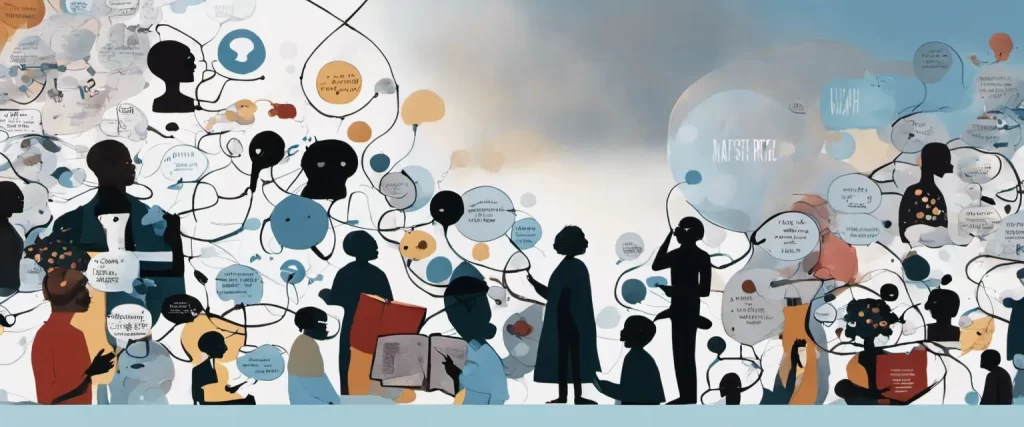
Similarities in human history
Both “Guns, Germs, and Steel” by Jared Diamond and “Sapiens” by Yuval Noah Harari delve into the expansive history of humanity, analyzing the factors that led certain civilizations to dominate others. While distinct in their approaches, the books share some key similarities:
1. Broad Historical Perspectives: Both authors take a sweeping and multidisciplinary approach to trace the origins and development of human societies. They explore factors such as geography, agriculture, technology, and socio-political structures to understand the differences in human history.
2. Geographical Determinism: Both books emphasize the powerful influence of geography on the course of human history. Diamond, in “Guns, Germs, and Steel,” argues that differential access to resources and domesticable plant and animal species shaped the fate of societies. Harari, in “Sapiens,” highlights how the geographical features of different regions affected the development of distinct cultures and civilizations.
3. Impact of Agriculture: Diamond and Harari both recognize the significance of the agricultural revolution in shaping human societies. They explore the transition from hunter-gatherer lifestyles to settled agricultural communities, and the profound impact it had on population growth, social structures, and cultural evolution.
4. Role of Technology: Both authors emphasize the role of technological advancements in determining success or failure for societies. From simple stone tools to the development of writing and advanced metalworking techniques, technology plays a crucial role in accelerating societal progress, enabling conquests, and spreading ideas.
5. Comparative Analysis: Both books employ comparative analysis to understand the differences and similarities between societies throughout history. By examining contrasting development paths and the outcomes of various civilizations, Diamond and Harari aim to uncover the underlying patterns of human history.
6. Challenging Traditional Narratives: Both authors challenge conventional explanations of historical processes. They provide alternative perspectives that dig deeper into the reasons behind societal advancements, conquests, and cultural transformations, going beyond mere superficial or ethnocentric interpretations.
Ultimately, “Guns, Germs, and Steel” and “Sapiens” offer comprehensive analyses of human history, highlighting the interplay between geography, agriculture, technology, and socio-political factors. While each author offers a unique perspective, their works converge in their aim to provide a more holistic understanding of the forces that have shaped our collective past.
Divergences in human history
Both Guns, Germs, and Steel by Jared Diamond and Sapiens by Yuval Noah Harari are influential books that delve into the study of human history. While they share some similarities in their approach to analyzing the trajectory of human civilization, they diverge in several aspects.
One major divergence lies in their respective focuses and scopes. Guns, Germs, and Steel primarily seeks to explain why certain civilizations attained power and dominance over others, with a particular emphasis on the role of geographic and environmental factors. Jared Diamond explores the impact of factors like the availability of domesticable plants and animals, the spread of diseases, and the advantages of certain geographic locations in shaping the course of human history. On the other hand, Sapiens takes a broader view, attempting to provide a comprehensive narrative of the entire history of Homo sapiens, covering not only the societal and ecological aspects but also examining the cultural, cognitive, and even philosophical developments.
Another divergence lies in their treatment of specific historical events and its implications. Diamond places significant importance on the agricultural revolution and its role in shaping the course of human civilization. He argues that the shift from hunter-gatherer societies to settled agricultural communities triggered a series of developments, including population growth, the rise of complex civilizations, and ultimately technological advancements and societal complexity. In contrast, Harari, while acknowledging the transformative impact of the agricultural revolution, also highlights the cognitive revolution as a pivotal point in human history, emphasizing how the development of language and imagination enabled the formation of complex social structures and cultural systems.
Moreover, the methodologies used by the two authors diverge as well. Diamond employs a more scientific and empirical approach, relying on disciplines such as archaeology, biology, and ecology to support his arguments. His analysis revolves around specific case studies and incorporates scientific data and evidence to support his thesis. Harari, on the other hand, employs a more narrative-driven and speculative approach, often relying on philosophical and anthropological insights. He weaves historical events into a larger story, drawing upon a wide range of disciplines, including anthropology, biology, sociology, and economics.
Lastly, the tone and underlying messages of the books have different focuses. Diamond’s Guns, Germs, and Steel aim to challenge Eurocentric interpretations of history and diminish the notion of inherent superiority or inferiority of human societies. His work emphasizes the importance of environmental factors rather than any inherent racial or genetic distinctions. Conversely, Harari’s Sapiens delves into questioning our own beliefs, behaviors, and assumed truths. He challenges the reader to critically reflect on the impact of ideas, ideologies, and imagined constructs that have shaped human societies throughout history.
In conclusion, although both Guns, Germs, and Steel by Jared Diamond and Sapiens by Yuval Noah Harari provide valuable insights into human history, they diverge in their respective focuses, scopes, treatment of specific events, methodologies used, and the underlying messages conveyed. While Diamond’s work centers on the role of geography and available resources in shaping human accomplishments, Harari takes a more comprehensive and speculative approach, examining a wider range of factors that have influenced human history.
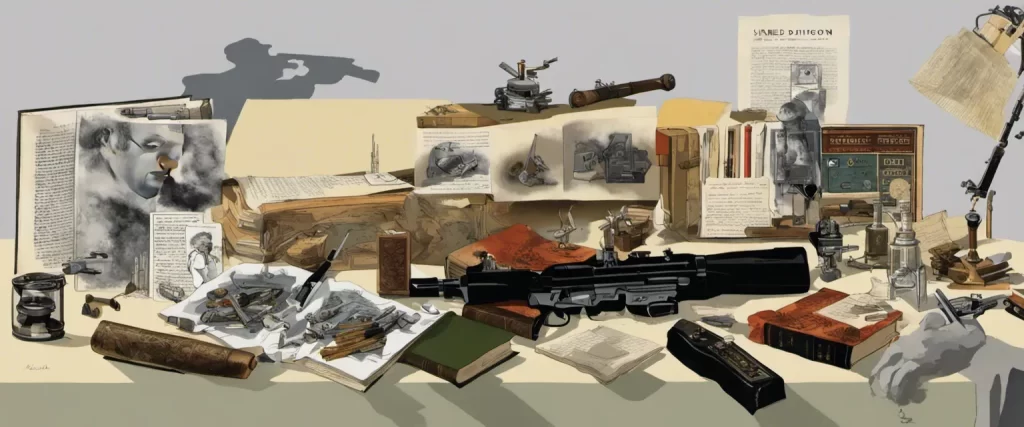
Conclusion
Both “Guns, Germs, and Steel” by Jared Diamond and “Sapiens” by Yuval Noah Harari are highly acclaimed and thought-provoking books, each with their own merits. Ultimately, the answer to which book is more worthy of reading depends on individual interests and the specific subjects one finds more intriguing.
“Guns, Germs, and Steel” offers a comprehensive and fascinating exploration of the factors that led to the disparities between different societies, focusing on geography, animal domestication, and food production. Diamond provides a compelling framework for understanding how certain civilizations developed while others did not, analyzing the impact of these factors on societal development. This book is particularly recommended for those interested in anthropology, archaeology, and history.
On the other hand, “Sapiens” provides a sweeping overview of the history of mankind, encompassing various aspects such as the cognitive revolution, agricultural revolution, and scientific advancements. Harari delves into philosophical and existential questions, exploring the impact of Homo sapiens on the world and how human societies have evolved over time. This book is recommended for readers interested in anthropology, history, and philosophy.
In summary, both books offer unique perspectives and are highly regarded within their respective genres. To decide which one is more worthy of reading, it is advisable to consider one’s own interests and the specific subject matter that intrigues them the most.
